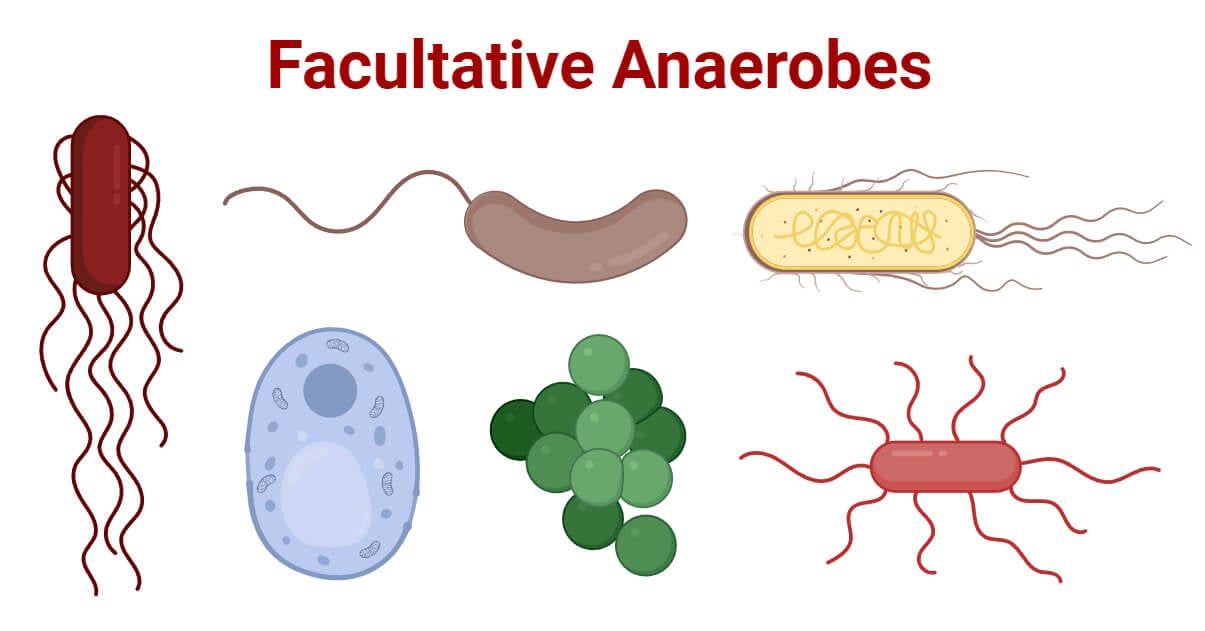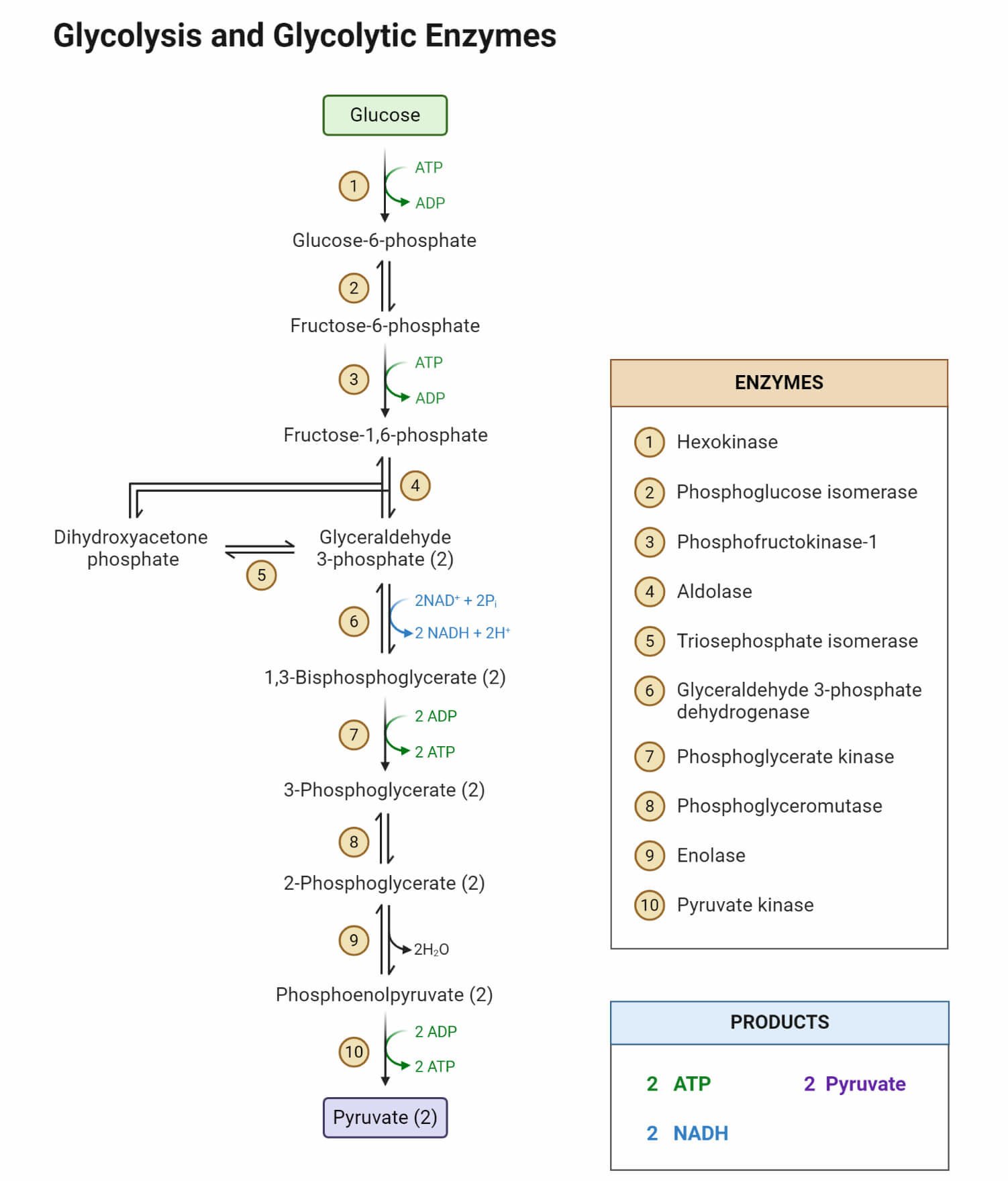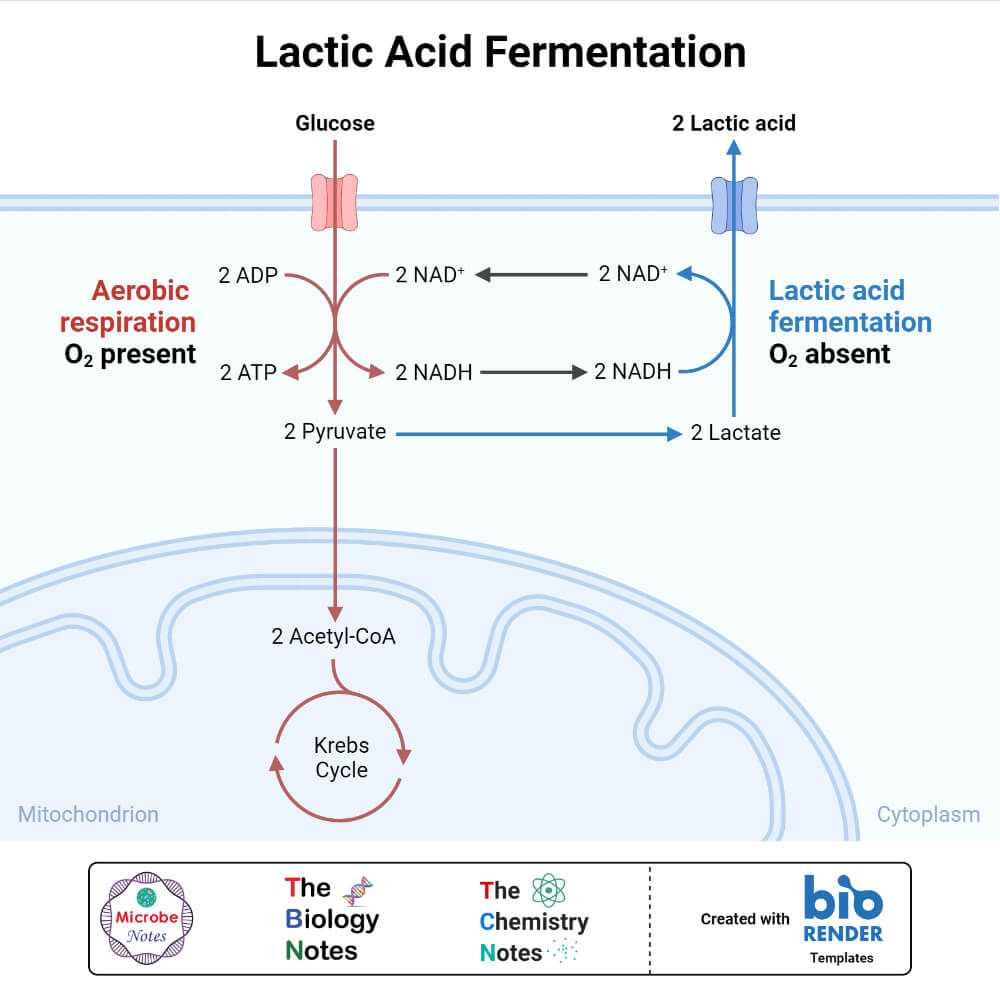Based on the ability of organisms to survive and grow either in the presence or absence of oxygen, they are generally classified as aerobic and anaerobic organisms. However, a third group of microorganisms can survive and grow in both aerobic and anaerobic conditions. Such organisms are called facultative organisms.
Facultative anaerobes are organisms that can survive and grow in the absence as well as in the presence of molecular oxygen.

These microorganisms can switch their metabolism between aerobic respiration (aerobic) and fermentation (anaerobic) in the presence and absence of oxygen, respectively; hence, they can thrive in the presence as well as in the absence of molecular oxygen.
- Mainly, bacteria and archaea are well-studied facultative organisms. Besides, fungi, protozoans, mollusks, and even some higher organisms show facultative modes of respiration.
- Facultative organisms can switch their metabolism between aerobic respiration, anaerobic respiration, or fermentation based on oxygen availability. If molecular oxygen is available, they use oxygen as a terminal electron acceptor during respiration, and if molecular oxygen is not available, they use other substrates such as nitrate (NO3-), nitrite (NO2−), sulfate (SO₄²-,), etc. as terminal electron acceptor.
- Due to their ability to sustain in both aerobic and anaerobic conditions, facultative organisms are well-suited and highly versatile in various ecosystems. Facultative microorganisms play significant roles in the ecosystem and clinical sectors. Most of the human pathogens are facultative microorganisms.
- Due to their ability to spread in every microenvironment encountered during infectious processes, facultative anaerobes may be regarded as the most advanced bacterial species from an evolutionary perspective and regarding oxygen exposure.
- In this article, we will study some characteristics, metabolic strategies, and the significance of such facultative organisms.
Interesting Science Videos
Characteristics of Facultative Anaerobes
- Their peculiar characteristic is their ability to survive both in the presence and in the absence of free molecular oxygen.
- They can switch their metabolism between aerobic respiration, fermentation, and anaerobic respiration based on the availability of molecular oxygen.
- They have developed several aerotolerance strategies like extracellular electron transfer mechanism, alternative respiratory polyketide quinones, etc., and aerotolerance strategies like ROS (reactive oxygen species) detoxification pathways, superoxide dismutase and catalase production, spore formation, extracellular colonization, and biofilm formation, etc.
- Their enzyme system is unique in the sense that they can function in both aerobic and anaerobic conditions.
- A large group of facultative organisms have superoxide dismutase and catalase enzymes. Superoxide dismutase converts superoxide anions into hydrogen peroxide (H2O2) and molecular oxygen (O2); whereas, catalase breaks hydrogen peroxide into molecular oxygen and water.
- They are the most diverse and versatile group of microorganisms having wide clinical and human applications.
Some common examples of Facultative Anaerobes
| Examples | Categories |
| Bacillus anthracis | Gram +ve bacteria |
| E. coli | Gram -ve bacteria |
| Klebsiella pneumoniae | Gram -ve bacteria |
| Proteus mirabilis | Gram -ve bacteria |
| Yersinia pestis | Gram -ve bacteria |
| Aeromonas spp. | Gram -ve bacteria |
| Listeria spp. | Gram +ve bacteria |
| Salmonella spp. | Gram -ve bacteria |
| Staphylococcus spp. | Gram +ve bacteria |
| Vibrio spp. | Gram -ve bacteria |
| Saccharomyces cerevisiae | Yeast |
| Mytilus edulis– Blue Mussels | Mollusks |
Metabolic Strategies of Facultative Anaerobes
Facultative organisms have unique metabolic strategies – they can synthesize ATP (Adenosine Triphosphate) in both aerobic and anaerobic conditions. Both aerobic respiration and anaerobic respiratory chains are seen in facultative organisms.
1. Aerobic Respiration in Facultative Anaerobes
It is the cellular respiration process where the terminal electron is transferred to molecular oxygen (O2), generating water molecules and energy molecule ATP. Here glucose molecule is completely oxidized into energy (ATP), carbon dioxide, and water in the presence of molecular oxygen.

If abundant free oxygen molecules are available in the habitat, the facultative anaerobes follow this mode of respiration to convert the glucose molecules into ATP. Aerobic respiration generates a large number of ATP (38 ATPs from a single glucose molecule); hence, it is the primary mode of respiration in facultative anaerobes.
2. Anaerobic Respiration in Facultative Anaerobes
Anaerobic respiration is the type of cellular respiration where the terminal electron is transferred to molecules other than molecular oxygen (O2) such as nitrate, nitrite, sulfate, fumarate, sulfur, etc., generating water molecules and energy molecule ATP.
In the absence of molecular oxygen, facultative anaerobes switch their respiration to anaerobic mode. In this type, only 2 ATP molecules are produced per glucose molecule; hence, it is used only in the absence of oxygen.
3. Fermentation
It is a metabolic process in which organic compounds are degraded anaerobically under the action of enzymes to produce organic compounds like alcohol, acetone, and/or acids. In this metabolic process, ATP is generated by substrate-level phosphorylation only because there is no Electron Transport System. In the fermentation process, the NADH molecules generated during glycolysis react with organic molecules, usually pyruvate, to produce organic end products, hydrogen, and carbon dioxide.

Ecological Significances of Facultative Anaerobes
- During anaerobic respiration, they use inorganic substances like nitrate, nitrite, sulfate, fumarate, sulfur, etc. as terminal electron acceptors; hence, they play important roles in biogeochemical cycles and nutrient cycling.
- They help in the decomposition of organic matter within inner oxygen-deplete layers of soil and piles of organic matter.
- They play essential roles in maintaining soil health and the soil ecosystem. Several facultative anaerobic bacterial species are found to degrade complex organic pollutants.
Clinical Significances of Facultative Anaerobes
- Most of the pathogenic microorganisms causing systemic infections are facultative anaerobic ones. As there is limited free oxygen available inside cells and tissues, microorganisms invading and infecting such places must have an anaerobic mode of respiration for energy acquisition and survival.
- Most wound infections, pneumonia and respiratory tract infections, urinary tract infections, blood infections, and deep tissue infections are caused by facultative anaerobes. Some common pathogenic organisms showing the facultative anaerobic mode of respiration are E. coli, Klebsiella spp., Salmonella spp., P. aeruginosa, Staphylococcus aureus, Enterococcus faecalis, Streptococcus pyogenes, S. pneumonia, H. influenzae, Listeria spp., Yersinia pestis, etc. Fungal pathogens like Candida albicans, C. glabrata, Cryptococcus neoformans, A. fumigatus, etc. show facultative anaerobiosis in their pathogenic form.
- Among the 12 antibiotic resistant pathogens in WHO’s priority pathogens list, 8 are facultative anaerobes, viz. Pseudomonas aeruginosa, Enterobacteriaceae, Enterococcus faecium, Staphylococcus aureus, Salmonellae, Streptococcus pneumoniae, Haemophilus influenzae, Shigella spp. Over 85% of pathogens causing bacteremia in children are also found to be facultative anaerobes.
- Even several normal floras of the respiratory tract and digestive tract show facultative anaerobic mode of respiration. The human gut microbiome is composed of a wide variety of facultative anaerobic bacteria and archaea. They play important roles in the digestion and fermentation of ingested food – mainly complex polysaccharides and glycoproteins.
- Lactic acid bacteria are facultative anaerobic bacteria that are used as probiotics for improving digestive microflora.
Human Applications of Facultative Anaerobes
Fermentation of food
Facultative bacterial and fungal species are used to produce different types of traditional and modern fermented foods and beverages. For instance, Saccharomyces cerevisiae for alcohol fermentation, lactic acid bacteria (like Lactobacillus spp., Streptococcus thermophiles, etc.) for cheese, yogurt, pickles, etc., Acetobacter spp. for vinegar fermentation, etc.
Bioremediation
Facultative anaerobic bacteria and archaea are used to break down complex organic pollutants in several composting processes like heap composting, pit composting, fermentation (anaerobic composting), in-vessel composting, etc. because eventually there will be an anaerobic or microaerobic condition within the piles of organic matters.
- Several species are used to produce probiotics, vitamins, enzymes, biofuel, etc. in biotech industries. For instance, E. coli produces insulin, vitamin K, and biofuel, Lactobacillus, and Bifidobacterium spp. as probiotics, etc.
- The study of facultative organisms like E. coli and S. aureus helps to understand the pathogenesis mechanism, metabolic processes, stress reaction, adaptive mechanisms in changing environments, etc. All these have provided invaluable information about host-microbiome interaction and disease pathogenesis.
Conclusion
Facultative organisms have a selection advantage over other species in adaptability and metabolism because they can switch between aerobic and anaerobic respiration depending on the oxygen supply. This advantage permits them to thrive in a wide range of habitats. Although few higher organisms follow facultative anaerobiosis, most facultative anaerobes are bacteria, archaea, and some fungi. Their most significant role is in disease pathogenesis, as a large group of human pathogenic bacteria and normal flora are facultative anaerobes. They also have significant roles in nutrient cycling, maintaining ecosystems, biotech industries, and other human applications.
References
- André, A. C., Debande, L., & Marteyn, B. S. (2021). The selective advantage of facultative anaerobes relies on their unique ability to cope with changing oxygen levels during infection. Cellular Microbiology, 23(8), e13338. https://doi.org/10.1111/cmi.13338
- Hentges DJ. Anaerobes: General Characteristics. In: Baron S, editor. Medical Microbiology. 4th edition. Galveston (TX): University of Texas Medical Branch at Galveston; 1996. Chapter 17. Available from: https://www.ncbi.nlm.nih.gov/books/NBK7638/
- Facultative anaerobic organism. (2023, August 15). In Wikipedia. https://en.wikipedia.org/wiki/Facultative_anaerobic_organism
- Britannica, The Editors of Encyclopaedia. “facultative anaerobe”. Encyclopedia Britannica, 22 Mar. 2023, https://www.britannica.com/science/facultative-anaerobe. Accessed 19 August 2023.
- https://www.biologyonline.com/dictionary/facultative-anaerobe
- https://byjus.com/neet/facultative-anaerobes/
- https://biologydictionary.net/facultative-anaerobe/
- https://study.com/learn/lesson/faculative-aerobes-bacteria-examples.html
- https://www.vedantu.com/biology/facultative-anaerobe
- https://bio.libretexts.org/Bookshelves/Microbiology/Microbiology_Laboratory_Manual_(Hartline)/01%3A_Labs/1.21%3A_Bacterial_Oxygen_Requirements
- https://microbeonline.com/oxygen-requirements-for-pathogenic-bacteria/
- https://www.biotechfront.com/2021/01/Classification-Microorganisms-oxygen-requirenment.html
- https://byjus.com/biology/aerobic-respiration/
- Cellular respiration. (2023, August 16). In Wikipedia. https://en.wikipedia.org/wiki/Cellular_respiration
- https://flexbooks.ck12.org/cbook/cbse-biology-class-10/section/1.6/related/lesson/aerobic-vs.-anaerobic-respiration-advanced-bio-adv/
